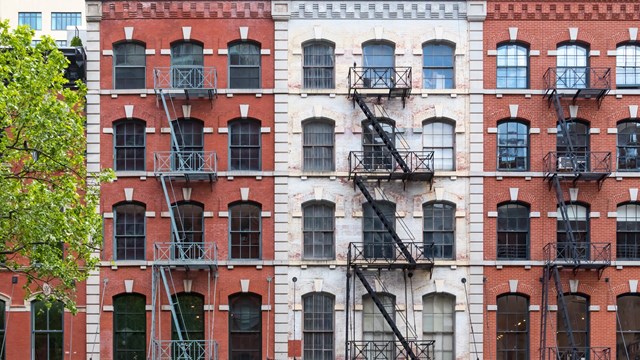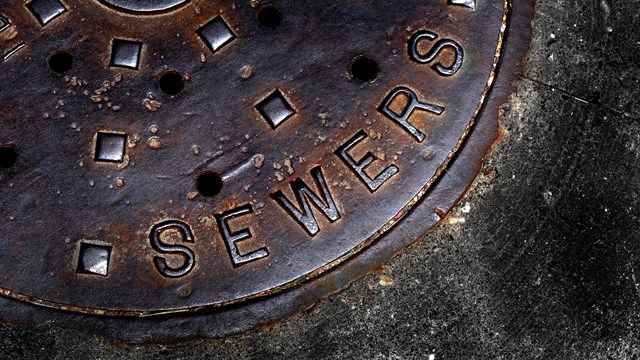New York City’s skyline is distinguished by thousands of rooftop water tanks. While they make for interesting architectural conversation pieces, the 5,000 to 10,000-gallon tanks actually serve a vital purpose. Since the New York City street water pressure isn’t sufficient to supply water to apartments above the sixth floor, water is pumped up to roof tanks for safe keeping until gravity delivers it where it’s needed—for cooking, bathing, or putting out potentially deadly fires. With all that riding on them, it’s imperative that the tanks are kept safe and well-maintained.
To that end, various city agencies have regulations covering the proper inspection, maintenance, and standards of care for the city’s rooftop water tanks. Those regulations changed recently however, and it’s important for co-op and condo administrators and residents alike to be aware of the alterations to the rule so they can not only keep their buildings’ water supply safe and healthy, but avoid penalties and fines as well.
New Rules for Safety
While the city’s roof tanks serve many functions, it’s the concern about the quality of drinking water delivered to tenants that compelled the New York City Council to enact the “Drinking Water Tank Inspection” law earlier this year.
On February 11, 2009, the council voted unanimously to amend the city’s administrative code to include a new local law requiring building owners or their agents to inspect their drinking water tanks at least once a year and keep the results of the inspections on file for at least five years. Inspection records must be made available to the Department of Health and Mental Hygiene, and building residents must be made aware of their right to inspect the records as well. The law also creates civil liability for non-compliance with the annual inspection schedule and the new notification requirements.
Why the Change?
The reason for the new inspection requirements comes down to safety. If the structural integrity of a water tank is compromised, birds or rodents may enter the tank and contaminate the water supply. Also, sediment, algae and unhealthy bacteria can build up inside a tank and present a serious health risk to building residents.
The Department of Health already requires buildings to inspect their drinking water tanks annually, and specifies that the inspections be performed by a New York City Licensed Plumber or anyone engaged in the business of cleaning, painting or inspecting roof tanks provided they have a permit from the commissioner. If unsafe conditions are found, the tank must be emptied, cleaned and disinfected in accordance with the standard procedures provided in the Health Code. Similarly, the New York City Department of Buildings (DOB) also requires building owners to drain, clean and sanitize their water tanks annually in accordance with the technical specifications provided in the New York City Plumbing Code.
Interestingly, even though the city’s Health Code and Plumbing Code require annual inspection and an annual cleaning, respectively, neither code requires the inspection results to be filed with the Department of Health or the DOB. So in essence, compliance with both codes has relied on the honor system—and the honor system is not working to the satisfaction of the City Council.
In testimony at the public hearing on the proposed Drinking Water Tank Inspection law on January 8, 2009, the Department of Health reported that during a spot-check for inspection records conducted in 2008, department representatives found that only one-third of the 83 buildings they visited could produce records of any water tank inspections. Similar rates of non-compliance were found in the last comprehensive study conducted in 1996 by the Department of Health and the Department of Environmental Protection. Furthermore, three percent of the water samples taken from the water tanks came back positive for coliform bacteria. It was this high rate of non-compliance and the potential health risk posed by improperly maintained water tanks that compelled the council to act.
What it Means for Buildings
Prior to the City Council-mandated change in the law, the Health Code prevented anyone other than Health Department operatives from gaining access to a building’s inspection records (assuming they had any records, that is.) Not even a subpoena could enable ordinary building residents to gain access to their building’s tank inspection records.
The intent of the new law is to improve compliance with annual inspection rules by creating transparency in the record-keeping process and by imposing civil penalties for non-compliance. Specifically, building owners and administrators are now required to post a notice in an easily accessible location stating where the water tank inspection results are maintained, and that they will be made available to residents by request.
If the results are not made promptly available, building residents can then notify the Department of Health and Mental Hygiene. The Department of Health will make a formal request for the inspection results, and the building owner or agent will be expected to respond to that request within five business days or face penalties.
The new drinking water tank inspection law also creates civil penalties for buildings in violation of the mandatory annual inspection. Buildings unable to produce proof of inspection may be fined between $200 and $2,000 per violation. Similarly, buildings that violate the notification provision of the new law may be liable for a civil penalty of up to $250 per violation.
Obviously, keeping the water that residents drink, cook with and bathe in safe should be a priority for any building owner or board. Now with the addition of cash penalties and citations for not keeping up with inspection requirements, staying on top of annual tank inspections should become a matter of course for every residential building in the city.
Philip J. Kraus is president of Fred Smith Plumbing & Heating Co., Inc., a New York City Master Licensed Plumber, a Licensed Fire Suppression Piping Contractor, and a water purification expert.







Comments
Leave a Comment